How do you tell that your ear piercing is infected? Post-piercing infection symptoms can be mild or severe. Get insight into causes of an infected pierced ear, infection signs, how to treat an infected ear piercing cleaning and how take care of pierced ear.
Ear piercing infection signs and symptoms
How do you tell if your ears are infected from a piercing? Infection would even occur during the process of piercing. But the signs may not show up immediately. You need to know how old the piercing became compromised. The following are some common signs and symptoms you should be aware of your ear (cartilage or earlobe) piercings.
1. Redness around the piercing
One of the signs of an infection is marked by a noticeable change in color especially around the earring hole. Redness accompanied by persistent pain should be taken seriously. Sometimes there may be inflamed streaks or thread-like marks or lines that radiate from round ear piercing.
2. Swelling and discharges

Secondly, it is expected that slight swelling should occur after you have pierced your ear. It could be pierced earlobes or cartilage. However, if the swelling does not subside after the second day, that could be dangerous. In some cases the swelling may extend to the glands in the neck region and you should have a sore feeling in your neck or jaw.
Swelling may be worsened by a drainage from the piercing holes. A discharge with brown, grey, yellow-greenish color marked by a bad, foul smell will indicate there being an infection. Piercing experts have argued that a clear discharge is normal while your piercing is healing. This discharge would actually be lymph fluid.
3. Bumps
Going on with signs to look for in an infected ear pierce, are formation of bumps especially when they appear reddened. This is less unlikely and not always the case as inflammation can develop at the site from irritation from the piercing rather than infection.
4. Bleeding
Another sign to observe is blood oozing from your pierced ear site or earring hole bleeding. This sign/symptom can point out the fact that you may have a problem with earring material or complication or you injured it. Besides being an ear lobe piercing infection symptom, bleeding excessively must not be taken lightly when it occurs frequently.
5. Tenderness

Tenderness to touch in the skin around the earlobe, conch or cartilage is another probable symptom of infections. Children will complain more because they have the tendency to touch whenever they feel an increased sensitivity or irritation.
6. Fever
A common severe symptom of infection is fever. Unless you have a cold or flu infection or other-related infections, fever should be a cause of worry when you are fine. Yet another infection symptom in babies and infants who have pierced ears.
What causes ear piercing infections?
We are going to look at how infection would occur during piercing or healing and after healing but the main cause of infection is due to germs – bacteria, fungi or certain viruses.
Causes of new piercing ear infections
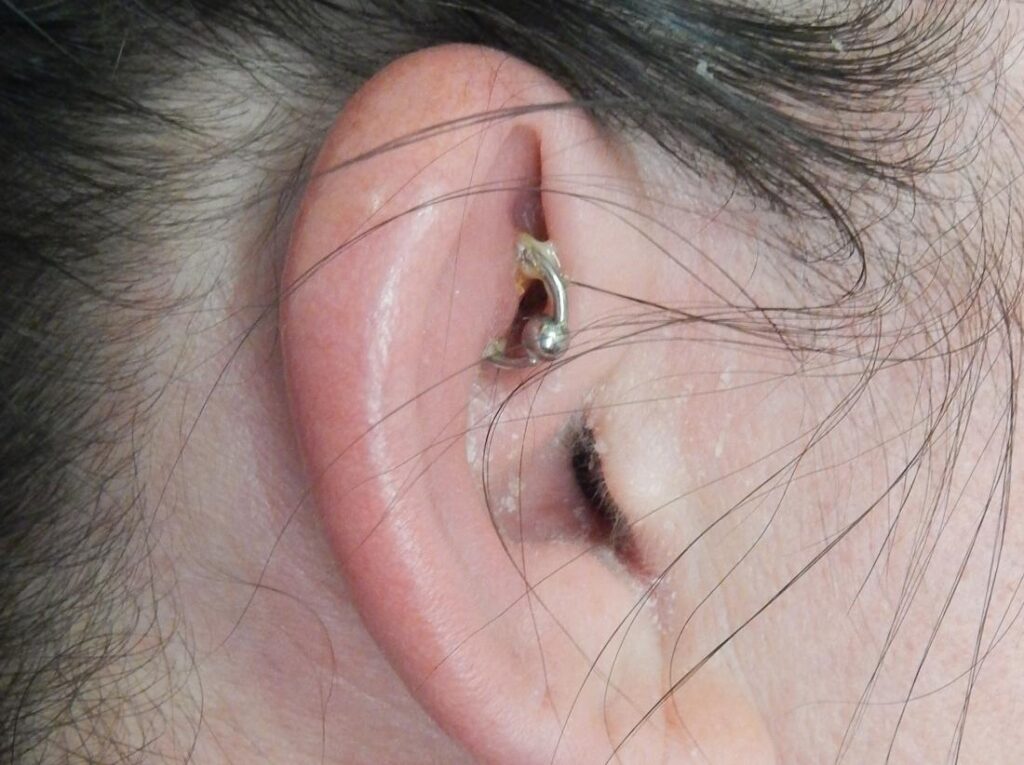
Depending on where you get your ear pierced, infection piercing could occur in any individual (babies or children and adults) with a new piercing.
1. Use of unsterilized equipment
Infection may occur if your piercer uses a piercing equipment either contaminated or already used to pierce another customer.
2. Touching
It majorly involves the transfer of disease-causing germs from the piercer’s hands to tools or directly to your ears. It may also occur while inserting the posts because the whole procedure must have contact between the source of contamination and the ears.
3. Bad or poor quality earrings
Thirdly, new ear piercing may get infected on condition that the first pair of earrings cause irritation that will result to itching. Continued itching perforates the skin for easy microorganisms. Consequently, According to Simple Remedies, microorganisms act as antigens, which triggers the body’s immune system, leading to the formation of pus after inflammation. An example of poor material is Nickel.
Cheap (inexpensive) earrings, too tight earrings can as well lead to inflammation. Heavy metal bars from earlobes can leave earring hole stretched.
Old ear piercing infection
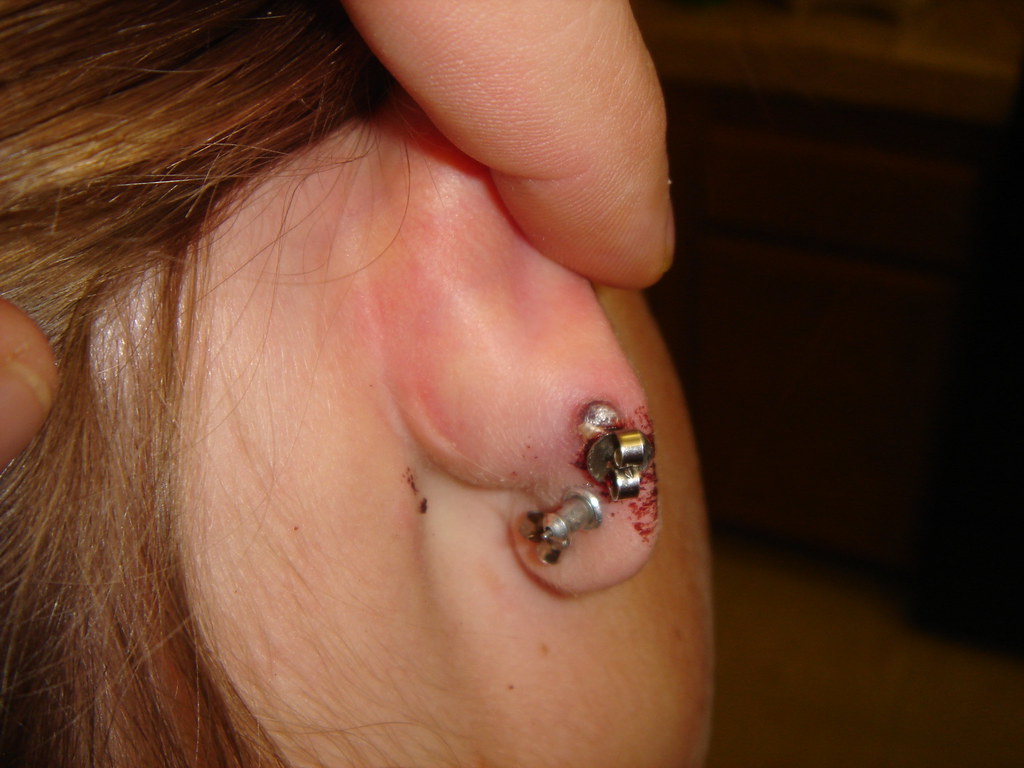
How do old pierced ears become infected? Do not be surprised to get your completely healed or old ear piercing infected months, or years later. Some of the common ways through which they get infected include:
- Touching with dirty hands or allowing your friends touch, hold the earrings or exchange them “swapping,”
- Removing or occasionally changing the earrings,
- Injury on earring hole causing trauma, surgery, etc.
- Bacterial infections of the ear cartilage e.g. perichondritis,
- Swimming in contaminated water pools, etc.
Baby ear piercing infection and risks
Does your baby’s ear-piercing appear to be infected? The once admirable pierced earlobes of baby daughter with cute looks may end up regret if you do not consider the factors before getting children’s ear pierced. This implies that if you rush into making quick decisions to pierce your child is very risky.
Basing on the fact that infants still have developing immune systems, Wendy Sue Swanson, M.D., strongly encourages parents to be patient until their babies have reached 6 months or older prior to piercing plans.
In addition, young children have juvenile and poor judgments which may make them begin to pull the piercing jewelry – earrings or bars. Doing so repeatedly and “traumatizing the area greatly increases the chances that a person will develop keloids,” Dr. Murase warns.
1. Baby infection symptoms and signs
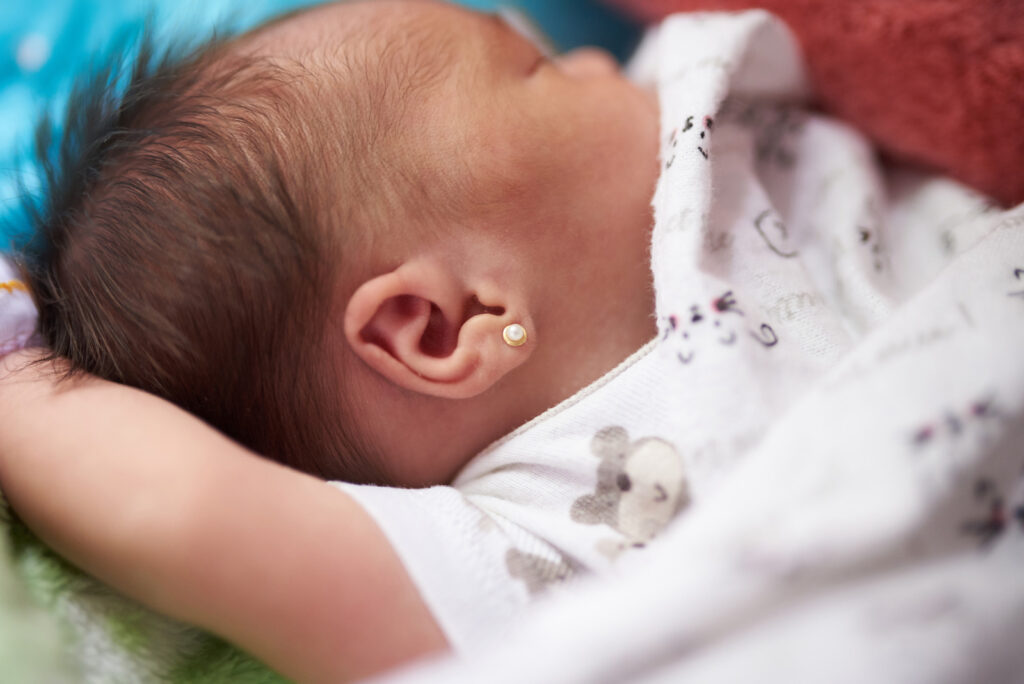
Some of the signs and symptoms of infected ear piercing may be similar to babies we highlighted earlier. They include redness, pain, swelling, tenderness and itching, fever (in case the infection is severe).
2. How to treat baby’s ear piercing infection
It is widely recommended to take your daughter to a health facility or doctor for proper medication to counter infection and other post-infection risks at large. Allergic reactions, keloids, irritation, etc.
Other curative measures that parents should adopt include regularly cleaning piercing of their daughters with recommended solutions or those provided during treatment at the clinic. Besides preventing infections, this will minimize the baby’s chances of pulling or touching due to irritation or itching.
Ear piercing infection treatment & bumps
How do you treat an infected pierced ear? Treatment will rely on information based on ear piercing symptoms. For instance, are the infection symptoms severe or minor? Is treatment targeting an adult or child? We shall focus on treatments provided by health centers and then how to treat pierced ear infections with home remedies.
1. Antibiotics
There are two broad categories of these medications which include the non-prescription and strength prescription antibiotics.
Most of the topical drugs available at your local or over the counter medications are non-prescribed. They are widely used on speculation that they cure minor infection symptoms like swelling. They include oral drugs, ointments and creams, for instance, Neosporin. Before taking them to cure symptoms after piercing, patients are advised to ask relevant health practitioner for safety usage.
On the other hand, prescription medicines will treat persistent infection symptoms such as fever, severe swelling, discharges, etc. These drugs must be taken under a doctor’s instruction only to control or cure severe signs and symptoms after ear piercing.
2. Pain relievers
It involves use of drugs such as Aspirin, acetaminophen or ibuprofen to kill pain that may accompany other symptoms. Note that pain killers do not guarantee a cure for infections.
If you experience severe symptoms such as frequent pain, high fever and excessive bleeding you should see your doctor who will determine what the problem is and which best treatments that you need in case of an infection.
Infected ear piercing treatment at home
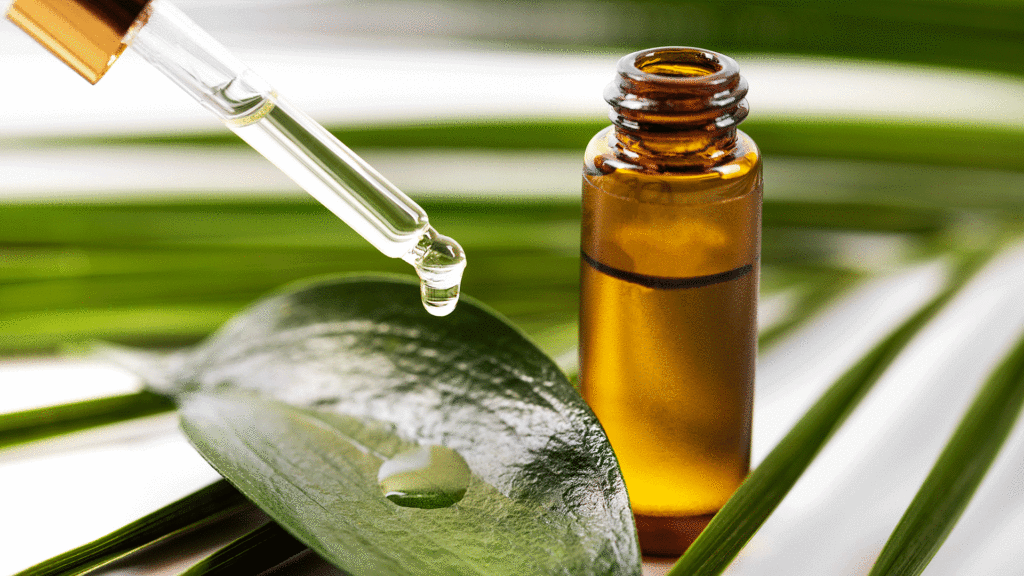
When the signs of infections are minor home remedies should clear them in a few hours or days. Not all home remedies will help cure an infected pierced ear. Some are only take away symptoms.
1. Tea tree oil
Tea tree oil is safe and easy to use at home. It contains an antiseptic property to fight germs and bacteria. You can apply tea tree oil as an alternative best of aspirin or chamomile tea as a natural treatment.
2. Sea salt solution (home-made saline)
After receiving medication, you can soak your infected earlobe piercing in a warm solution of non-iodized salt. Add about 1/4 teaspoon of sea salt to shot glass of warm water.
3. Rubbing alcohol
Apart from using alcohol to clean a piercing while enhancing healing, this product can help to clear symptoms by keeping infection-causing germs at bay.
- Make use of small cotton swab in alcohol.
- Apply rubbing alcohol in front and at the back of infected earlobes.
- Repeat the cleaning procedure 2 – 3 times a day.
- Always handle your piercing with clean hands.
NOTE: avoid using rubbing alcohol to clean newly pierced ear in order to quicken healing.
4. Warm/cold compress
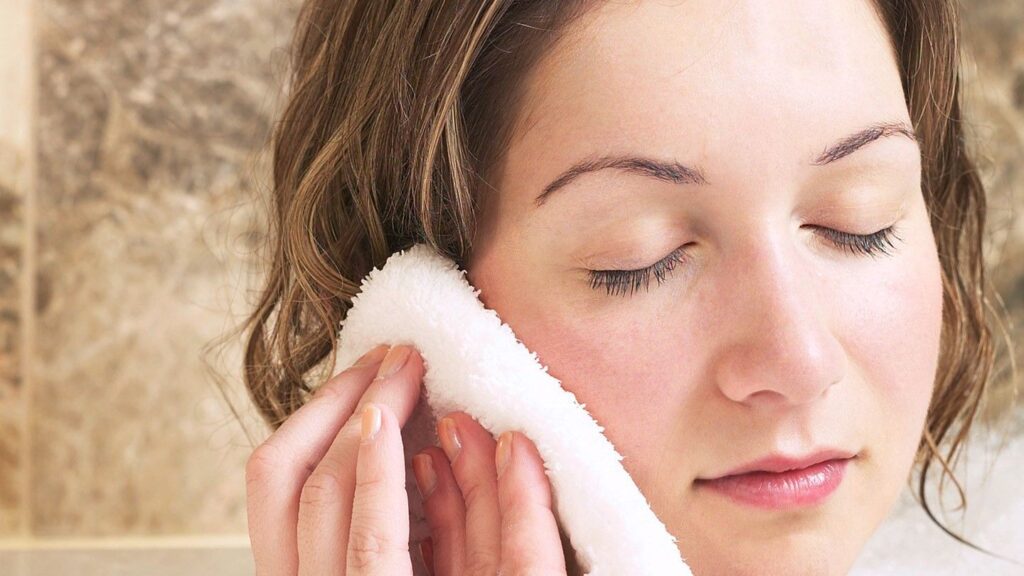
A warm compress is ideal to bring down swelling and piercing bumps especially if the pierced ear is aching. On the other hand, apply a cold compress when you feel mild pain but not on a piercing wound symptomatic of bleeding.
Ear piercing care – cleaning and other safety tips
Learning how to take care of a piercing is important whether it is an infected pierced ear or free of infection signs and symptoms. Practicing proper ear piercing care will not only be prevention against the occurrence of infection but will also promote quicker healing and greatly help an infected pierced ear. You should observe piercing care for good health more so your baby and children.
1. Cleaning
This is something you should do routinely (daily) regardless of a newly pierced, healing or old piercing.
How do you clean your ear piercing? The best cleaning solutions should have been given by your piercer and it is expected that you follow the recommended procedures. However, you need to use saline, alcohol or an antibiotic solution. Before you touch your ears ensure your hands are clean and dry.
Using small cotton swabs, apply saline or alcohol in front and behind the piercing sites. Ensure you do not cause much disturbance to the studs, bar or earring while cleaning fresh piercing wounds.
Do not use alcohol or solutions containing alcohol if you have increased sensitivity in the skin. This may lead to further irritation make skin around new piercing become more inflamed. Another caution you must take is never to use alcohol or allow children with piercing use alcohol.
2. Anti-bacterial solutions (soaps)
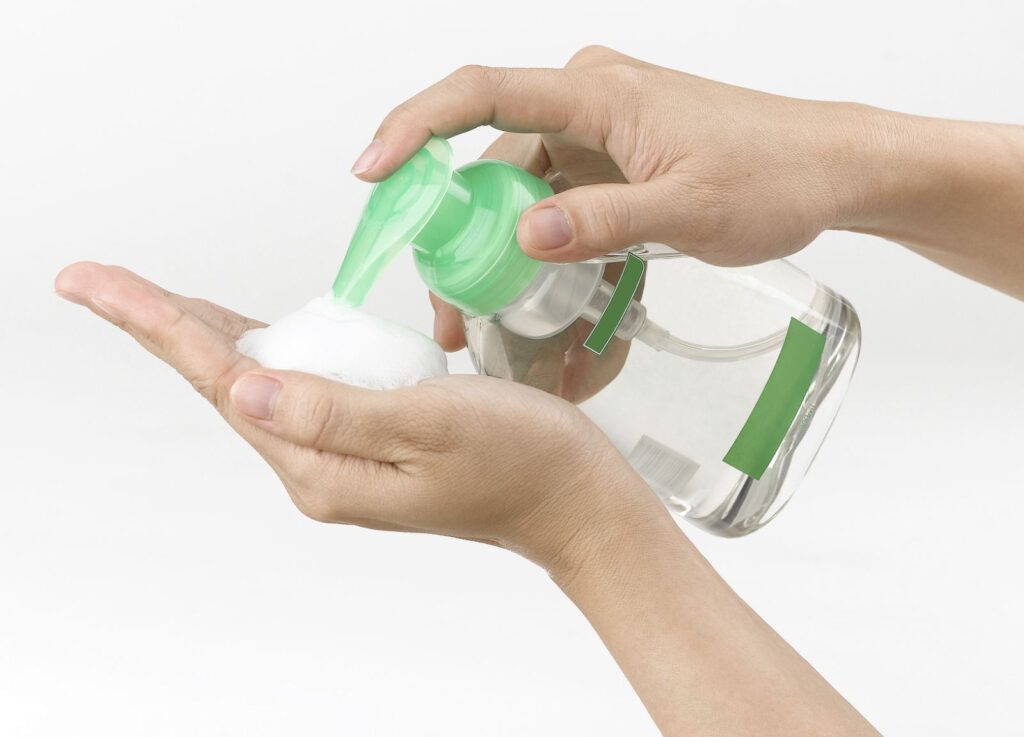
This solution is what every kind of body piercing requires to keep infection-causing microorganisms away from the wounds. Besides being a common cleaning agent for hands as well as the pierced sites.
3. Do not remove the ear jewelry
Removing can easily contaminate or cause germs being transferred to the earring bars leading to infection in earring hole after placement. Besides, it may cause unnecessary injury and lead to bleeding. Unless it is an old piercing or you are instructed to remove ear jewelry in order to clean properly, leave them alone.
4. Avoid causing injury
Be careful while removing your tops and avoid clothes with loose strips (strings). Otherwise get used to wearing shirts, open (zipped) tops or with buttons.
5. Keep tidy

Wash your hair regularly and protect it from coming into contact with your new piercing. Moms should also keep your daughter’s hair clean or short.
Keep off swimming pools for at least 2 to 3 weeks to allow for efficient healing especially if you have any kind of ear cartilage piercing.
- especially if you have an
- ear-piercing care solution
- how to help an infected pierced ear
In summary
Failure to find an immediate solution to ear infection can lead to further complications including formation of keloid or scar tissue. For your information, anyone can develop serious systemic diseases if you ignore going for treatment. The fundamental and best step to make in ensuring you avoid ear infections associated with piercing is getting yours from a well-trained, experienced and trusted piercer. Cleaning is mandatory and the bottom line.
If you need information about infected ear cartilage or tragus piercing including causes, symptoms, and many more follow this link (ear) cartilage piercing infection.

